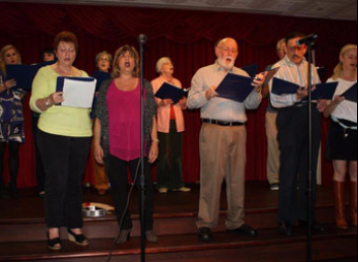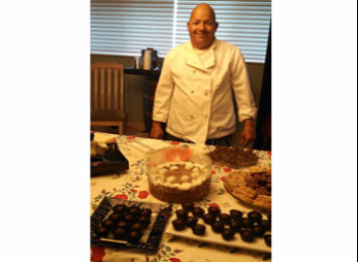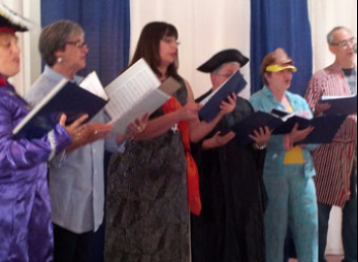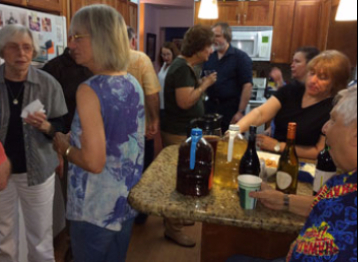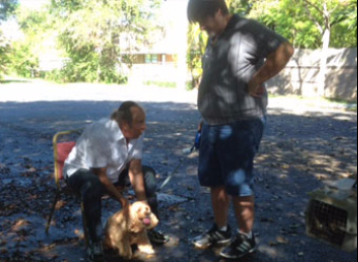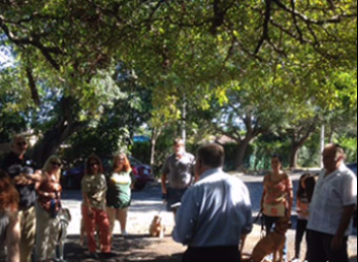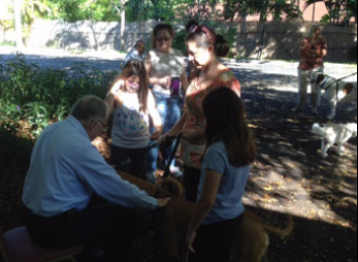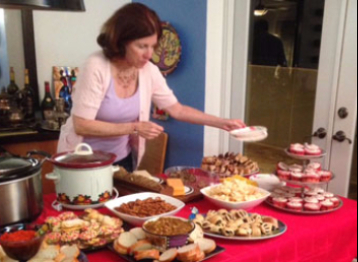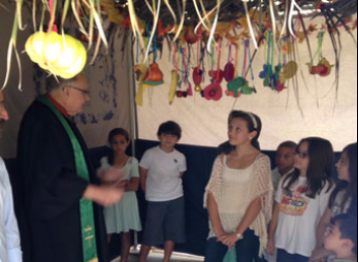Beth Jacob Torah
Miami Beach's first synagogue, Congregation Beth Jacob, was built in 1928-29 at 311 Washington Avenue. The site was chosen because at the time the synagogue was built, Jews were not permitted to live north of Fifth Street. Prior to this, Jews had been denied permission to construct a synagogue. They had to ferry across Biscayne Bay (and later the County Causeway, now the MacArthur Causeway, built in 19230) to attend religious services at B'nai Zion Congregation in Miami. Orthodox Jews in the congregation, who walked to shul, held services in the Royal Apartments at 221 Collins Avenue.
By 1936, the congregation outgrew its original facility and constructed a second larger adjacent building for the synagogue at 301 Washington Avenue. Gangster Meir Lansky and his cronies attended services here. Both buildings were placed on the National Register of Historic Places in 1980. The Jewish Museum of Florida purchased the original building in 1995. Beth Jacob Congregation began to dwindle and in 2005 the congregation closed its doors. The Jewish Museum of Florida purchased and restored the synagogue, ensuring that the building so rich in Jewish history will continue to be preserved and become a repository for the chronology of Florida's Jews.
Ahavat Olam is proud to preserve Beth Jacob's legacy as well. We opened our doors as they were closing theirs. Our first Torah was procured from this congregation, and they donated their High Holy Day machzorim (prayerbooks) to us.
Miracle Holocaust Torah
Associate Press (AP) reporter Matt Sedensky's following article hit the wire on the afternoon of September 16, 2009. The New York Times picked it up off the wire, which rarely happens (they have such a large reporting staff that they try to use a very limited number of wire stories).
Torah That Survived Holocaust Finds Home in Miami
MIAMI -- Rabbi Danny Marmorstein used the Yiddish word "bashert" to describe how a Torah created in 19th-century Eastern Europe survived the Nazi regime in near-perfect condition and landed a world away at his tiny synagogue. "It means 'meant to be.'" he said, "and this was meant for us." The 131-year-old Torah is being celebrated at Congregation Ahavat Olam for the first time on Rosh Hashanah, offering a powerful symbol on the endurance of the Jewish faith.
The sheepskin scroll was believed to have been completed in 1878, the date of the inscription on its wooden handle. The handle also bears the name of the couple who donated it to their congregation in Moravske Budejovice, in what is now the Czech Republic. It was kep in a warehouse with other Torahs and Judaica after Hitler came to power, coming under the Nazis' control. After the Nazis fell, the cache from the Central Jewish Museum in Prague was controlled by communists who eventually sold the scroll and 1,563 others to a London synagogue in 1963.
That repository, the Memorial Scrolls Trust, has given the Torahs to congregations, museums and other groups as symbols of survival of the faith and a connection to all the Jews lost during the Holocaust. "We've sent them all over the world," said Evelyn Friedlander, the London-based curator of the trust, "and they've come back to life." The scroll came to Miami after Marmorstein placed the synagogoue's name on a waiting list several years back. Like all the trust's scrolls, it remains the property of the London organization, on indefinite loan to the temple. Congregations are chosen, in part, based on their desire to incorporate the scroll into their worship.
At Ahavat Olam, the Torah was welcomed last month with a procession from Marmorstein's house to the Methodist church about a mile away where the 100-plus-member congregation has been renting space for worship. It was to be read for the first time and be the subject of the rabbi's sermon when the congregants celebrate the Jewish new year on Friday.
Already, its history has resonated with members.
Bianca Lerner, 80, survived the Holocaust in part by being taken in by the parents of a Christian friend and then hiding in a Catholic orphanage. She remembers being forced with her parents from their home. Her father was killed in a Polish ghetto. Her mother died at the Treblinka extermination camp. "My parents just walked out of our apartment, which was beautifully furnished with antiques and Oriental rugs and we just walked out and that was it," she said. "Since then, I've thought material possessions don't mean anything." But a Torah, Lerner said, is different: It's not just the central symbol of her faith, but something used in actual prayer and worship.
Irving Whitman, 88, says he was a young Army private from New Jersey when he helped liberate teh Buchenwald concentration camp. Those memories are seared in his mind. And he sees the Torah as an extension of his wartime experience. "It's all part of the same story," he said. "It's all part of the same historical moment."
Susan Boyer, the U.S. director of the trust, also heads the Czech Torah Network in Sherman Oaks, Calif., which has helped reunite Holocaust survivors with scrolls from their hometowns.
When she thinks of the surviving Torahs, she wonders what happened to the people from its synagogue, the people who prayed with it. It is a sad story, she admits, but she says it is buffered by hope, because the faith has lived on.
If the Nazis had prevailed, Jews would have faded away long before Ahavat Olam gained roots in South Florida five years ago. Hitler's army would have killed the men and women who bore its congregants. And the Torah never wold have left SS hands.
Marmorstein knew he wanted a Holocaust-surviving Torah since the congregation was born. He wanted to pay tribute to the Jews who died and could think of no better way than through the faith's most prized possession.
The 54-year-old rabbi shows a black-and-white picture of 11 relatives, his great aunts and uncles, grandfather and great-grandparents. Only two in the photo survived the Holocaust.
When asked why getting the Torah was so important, his eyes well with tears.
"It's in my blood, this whole history is in my family," he said. "It's easy for people to sit and talk about it. But when it was your own father, your own uncle, when your grandparents were killed. That's why."
Torah Procession
Click on a thumbnail to view a larger image. Click on the close button to close it.


